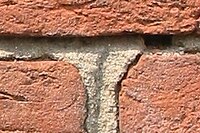
Photo from wikipedia
ABSTRACT The Aqueduct is one of the city landmarks of Skopje, Republic of North Macedonia. It was part of a water-supply system, with a total original length of about 10… Click to show full abstract
ABSTRACT The Aqueduct is one of the city landmarks of Skopje, Republic of North Macedonia. It was part of a water-supply system, with a total original length of about 10 km, while its surface remains are about 385 m long. The age of the Aqueduct is not known—several hypotheses place it to periods between the 6th and 16th centuries. Six mortar samples from different positions of the eastern façade were taken for radiocarbon (14C) dating. In order to extract only the carbon associated to the time of building, three strategies for sample preparation were used: (1) mechanical separation of lime lumps formed during mortar hardening (2) selection on the basis of particle size and the ability to suspend in water induced by ultrasonic shock, and (3) collection of two gas CO2 fractions produced from the same bulk in reaction with acid. Characterization of fractions was performed by isotopic carbon composition and FTIR-ATR analyses. The most plausible results were obtained from lime lump fractions that were dated in the timeframe of 15th to 17th century.
Journal Title: Radiocarbon
Year Published: 2019
Link to full text (if available)
Share on Social Media: Sign Up to like & get
recommendations!